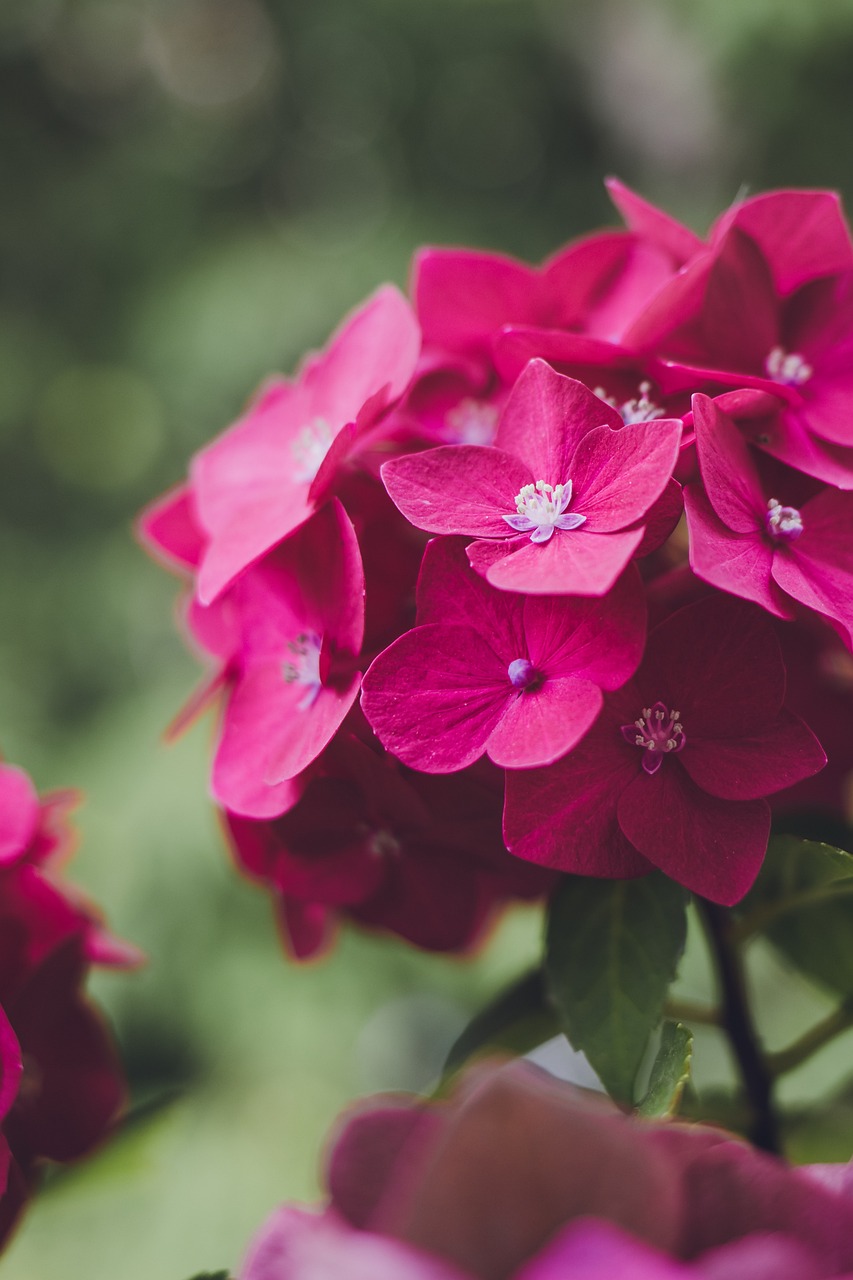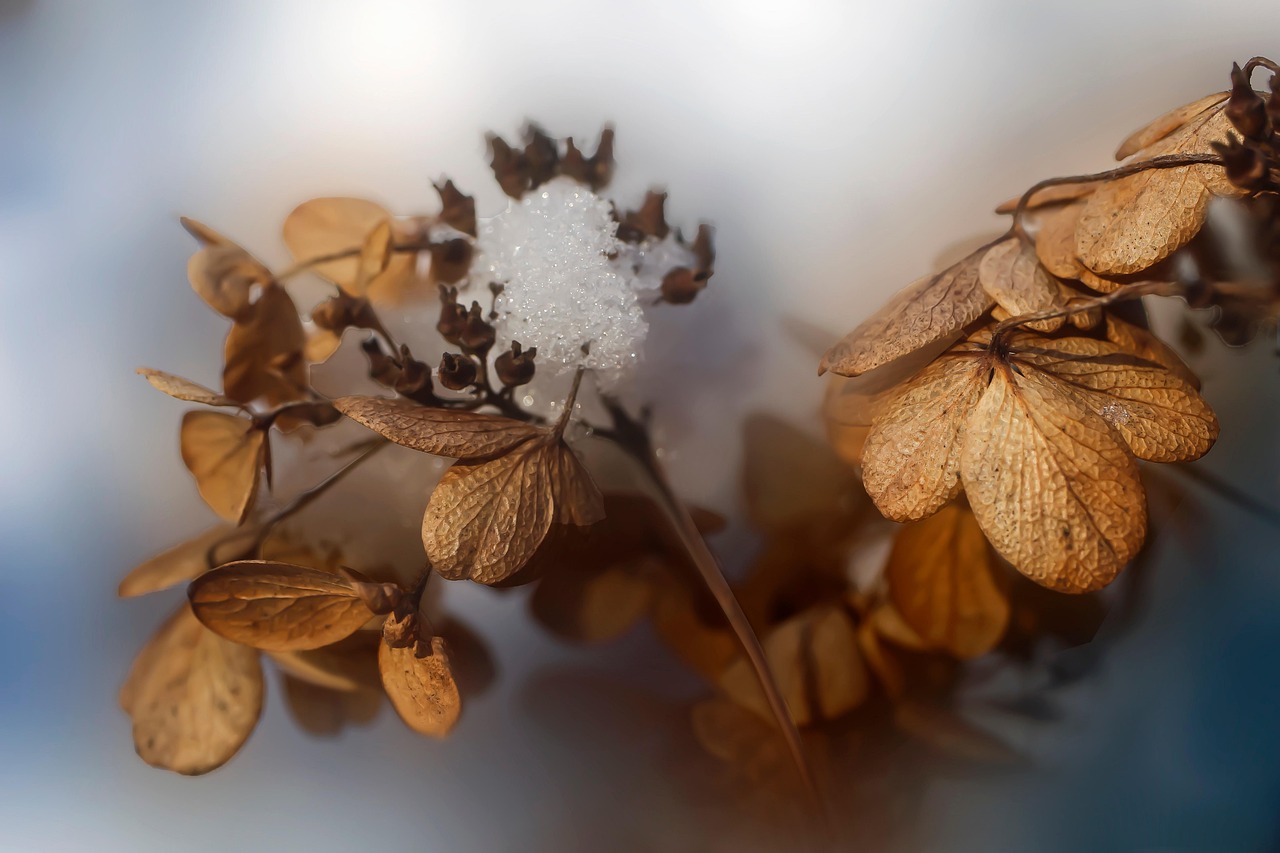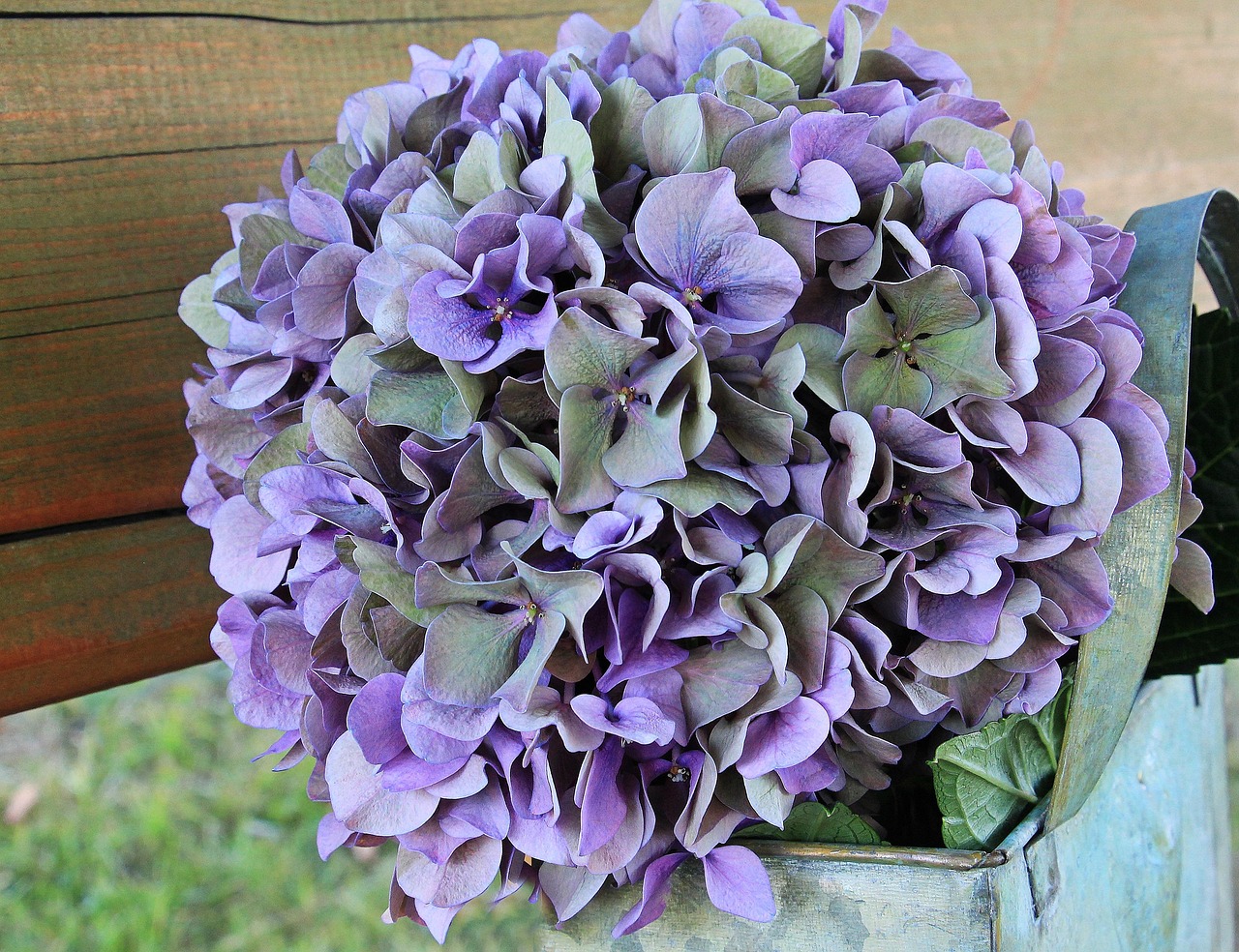Hydrangeas are among the most captivating flowers, enchanting garden enthusiasts with their stunning colors and lush blooms. Unlocking the secrets to their care and growth can transform any garden into a vibrant hydrangea heaven.
With their large, showy flower heads and diverse varieties, hydrangeas have become a staple in many gardens around the world. These plants are known for their ability to thrive in various climates, making them a favorite choice for both novice and experienced gardeners. The beauty of hydrangeas is not only in their appearance but also in their adaptability, as they can be found in shades ranging from soft pastels to vivid blues and pinks.

Understanding the basic needs and characteristics of hydrangeas is essential for successful cultivation. They require proper soil conditions, adequate sunlight, and careful watering to flourish. Additionally, some varieties are more tolerant of cold temperatures, while others prefer warmer climates. Knowing which type of hydrangea suits your garden will help ensure that these stunning blooms thrive.
Types of Hydrangeas
There are several different types of hydrangeas, each with unique features and requirements. Here are some of the most popular varieties:
- Hydrangea macrophylla: Also known as bigleaf hydrangeas, these are famous for their large flower clusters, which can be blue or pink depending on soil pH.
- Hydrangea paniculata: Commonly referred to as panicled hydrangeas, they produce cone-shaped flower clusters that bloom from summer to fall.
- Hydrangea arborescens: Known as smooth hydrangeas, these varieties are hardy and typically produce white flowers.
- Hydrangea quercifolia: Also known as oakleaf hydrangeas, they are noted for their distinctive oak-shaped leaves and creamy white blooms.
- Hydrangea serrata: These are mountain hydrangeas that are smaller and more compact, making them suitable for smaller gardens.
Growing Conditions
To create a hydrangea heaven in your garden, it is important to consider the growing conditions these plants need. Here are some key factors for success:
| Condition | Recommendations |
|---|---|
| Soil Type | Well-drained, rich in organic matter |
| Sunlight | Partial shade to full sun (depends on variety) |
| Watering | Consistent moisture; avoid waterlogging |
| Fertilization | Balanced fertilizer during growing season |
In addition to these growing conditions, it’s crucial to monitor soil pH for certain varieties of hydrangeas. The color of the blooms can change based on the acidity or alkalinity of the soil. For example, more acidic soils can produce blue flowers, while alkaline soils tend to yield pink blooms.
The adaptability of hydrangeas makes them an excellent choice for various garden designs. Whether used as a border plant, a statement piece in a flower bed, or even in container gardening, they bring beauty and elegance to any outdoor space. Understanding their requirements and characteristics is the first step toward achieving a breathtaking display of these stunning blooms.
Hydrangea Care Throughout the Seasons

Caring for hydrangeas requires attention throughout the year. Each season brings its own set of tasks that are crucial for maintaining the health and beauty of these plants. Here is a seasonal breakdown of what to do and when:
Spring Care
Spring is a vital time for hydrangeas as they awaken from dormancy. Here are essential care tips for this season:
- Pruning: Depending on the type of hydrangea, pruning may be necessary. For Hydrangea macrophylla, prune immediately after flowering. For Hydrangea paniculata, pruning can be done in late winter or early spring.
- Fertilizing: Apply a balanced fertilizer to promote healthy growth. Look for a formula specifically designed for flowering plants.
- Watering: As temperatures begin to rise, ensure your hydrangeas receive adequate moisture, especially if there is little rainfall.
Summer Care
During the summer months, hydrangeas need consistent care to maintain their lush appearance:
- Watering: Hydrangeas need more water during hot summer days. Aim to provide deep watering once or twice a week, depending on rainfall.
- Mulching: Add a layer of mulch around the base of the plants to retain moisture and suppress weeds.
- Pest Control: Watch for pests such as aphids and spider mites. If detected, treat them promptly with insecticidal soap or neem oil.
Fall Care
As fall approaches, preparations for winter become essential. Here are key tasks to consider:
- Deadheading: Remove spent blooms to encourage new growth and prevent disease.
- Fertilizing: A light application of fertilizer in early fall can help support root development before winter.
- Preparing for Winter: Depending on your climate, some hydrangeas may need protection from frost. Consider wrapping them in burlap or adding extra mulch.
Winter Care
In winter, hydrangeas enter a dormant phase. Although they require less attention, some care is still necessary:
- Avoid Excess Watering: During winter, ensure the soil is not overly saturated as this can lead to root rot.
- Check for Damage: Inspect plants periodically for any signs of damage from cold winds or snow.
- Planning for Spring: Use this time to plan any changes you want to make in your garden, including new hydrangea varieties you might want to add.
Common Hydrangea Problems and Solutions

Even with proper care, hydrangeas can encounter issues. Recognizing and addressing these problems early can save your plants:
- Pest Infestations: Insects like aphids and spider mites can weaken plants. Use organic pesticides to manage these pests.
- Disease: Watch for signs of powdery mildew or root rot. Ensure proper air circulation and avoid overwatering to prevent these conditions.
- Color Changes: If blooms are not the expected color, check the soil pH. Adjustments can help achieve the desired hue.
By being proactive in seasonal care and addressing common problems, you can ensure that your hydrangeas remain vibrant and healthy throughout the year. These measures will help you create and maintain a true hydrangea heaven in your garden.

Hydrangea Propagation Techniques
Creating more hydrangeas can be a rewarding experience for any gardener. Propagation allows you to expand your collection or share these beautiful plants with friends and family. There are several effective methods for propagating hydrangeas:
Cuttings
One of the most popular ways to propagate hydrangeas is through cuttings. This method is simple and effective, especially during the growing season:
- Choose the Right Time: Late spring to early summer is ideal for taking cuttings when the plant is actively growing.
- Select Healthy Stems: Look for healthy stems that are 4 to 6 inches long and free from disease.
- Prepare Cuttings: Cut below a leaf node at a 45-degree angle. Remove the lower leaves, leaving two or three sets of leaves at the top.
- Rooting Hormone: Dip the cut end in rooting hormone to encourage root development.
- Planting: Place the cuttings in a pot filled with a well-draining potting mix. Water thoroughly and cover with a plastic bag to maintain humidity.
- Transplanting: After several weeks, once roots have developed, transplant them into larger pots or directly into the garden.
Layering
Layering is another effective propagation technique that involves bending a stem to encourage rooting while it is still attached to the parent plant:
- Select a Stem: Choose a low-growing stem that can be easily bent to the ground.
- Prepare the Soil: Loosen the soil where the stem will touch the ground.
- Bend the Stem: Carefully bend the stem down to the soil, burying a section of it while leaving the tip exposed.
- Secure the Stem: Use a small rock or stake to hold the stem in place.
- Water Regularly: Keep the soil moist as roots develop. This may take several months.
Division
For mature hydrangeas, division is an excellent method of propagation, especially for Hydrangea arborescens and Hydrangea paniculata. This process involves splitting an established plant into smaller sections:
- Timing: The best time to divide hydrangeas is in early spring or fall when they are dormant.
- Digging Up the Plant: Carefully dig around the base of the hydrangea, lifting it out of the ground with as much root mass as possible.
- Splitting: Use a sharp spade or knife to cut the root ball into two or more sections. Each section should have healthy roots and stems.
- Replanting: Immediately replant each division in prepared soil, making sure they are adequately spaced apart.
Caring for Newly Propagated Hydrangeas
After propagating hydrangeas, it is essential to provide proper care to ensure their successful establishment. Here are some tips:
- Watering: Keep newly propagated plants consistently moist but not soggy. Regular watering is key during their initial growth phase.
- Sunlight: Provide partial shade for young plants until they establish strong root systems. Gradually introduce them to more sunlight.
- Pest Monitoring: Watch for pests and diseases as young plants can be more vulnerable. Address any issues promptly.
By mastering these propagation techniques, you can expand your hydrangea collection and enjoy the beauty of these breathtaking blooms in even more areas of your garden. Each method offers a unique way to grow your passion for hydrangeas while creating new opportunities for beauty in your outdoor spaces.
Creating the Perfect Hydrangea Garden
Designing a hydrangea garden can be a delightful project that allows you to express creativity while nurturing nature. Consider the following elements to enhance the beauty and functionality of your hydrangea garden:
Choosing the Right Location
Location plays a crucial role in the success of your hydrangeas. Here are some factors to consider:
- Sunlight Exposure: Identify areas in your garden that receive the right amount of sunlight based on the variety of hydrangeas you choose. Some prefer full sun, while others thrive in partial shade.
- Wind Protection: Select a spot that offers some protection from harsh winds, which can damage blooms and stems.
- Accessibility: Ensure that your hydrangeas are easily accessible for maintenance tasks like watering, pruning, and deadheading.
Color Coordination and Plant Pairing
Hydrangeas come in a wide array of colors and sizes, making them perfect for creating visual interest in your garden. Consider these tips:
- Color Harmony: Choose hydrangea varieties that complement each other. For example, pairing blue and pink varieties can create a stunning contrast.
- Layering Heights: Incorporate plants of varying heights. Taller hydrangeas can serve as a backdrop for shorter flowering plants, adding depth to your garden.
- Seasonal Blooms: Mix hydrangeas with other perennials that bloom at different times to maintain color throughout the growing season.
Incorporating Hardscaping Elements
Adding hardscaping features can enhance the overall design of your hydrangea garden:
- Paths and Walkways: Create inviting paths using stones or gravel to guide visitors through your hydrangea display.
- Sitting Areas: Consider placing benches or chairs within the garden to provide a peaceful retreat for enjoying the blooms.
- Decorative Fencing: Use fencing or trellises adorned with climbing plants to frame your hydrangea garden and add structure.
Final Thoughts
Hydrangeas are truly captivating plants that can transform any garden into a stunning landscape filled with color and texture. By understanding their unique needs and employing effective propagation techniques, you can ensure that these breathtaking blooms flourish in your garden for years to come. From seasonal care to thoughtful garden design, each aspect contributes to creating a hydrangea haven.
As you venture into the world of hydrangeas, remember that patience and observation are key. Each plant has its own personality and will respond differently to care. Take the time to observe how they grow and adapt to your environment, and don’t hesitate to experiment with different varieties and arrangements.
Ultimately, the joy of cultivating hydrangeas lies not only in their beauty but also in the connection they foster between nature and gardener. Embrace this journey as you unlock the secrets to these breathtaking blooms, creating a vibrant oasis that brings joy to your life and enhances your outdoor space.
With the right knowledge and passion, you can create an enchanting hydrangea garden that serves as a testament to nature’s beauty and your gardening skills.
